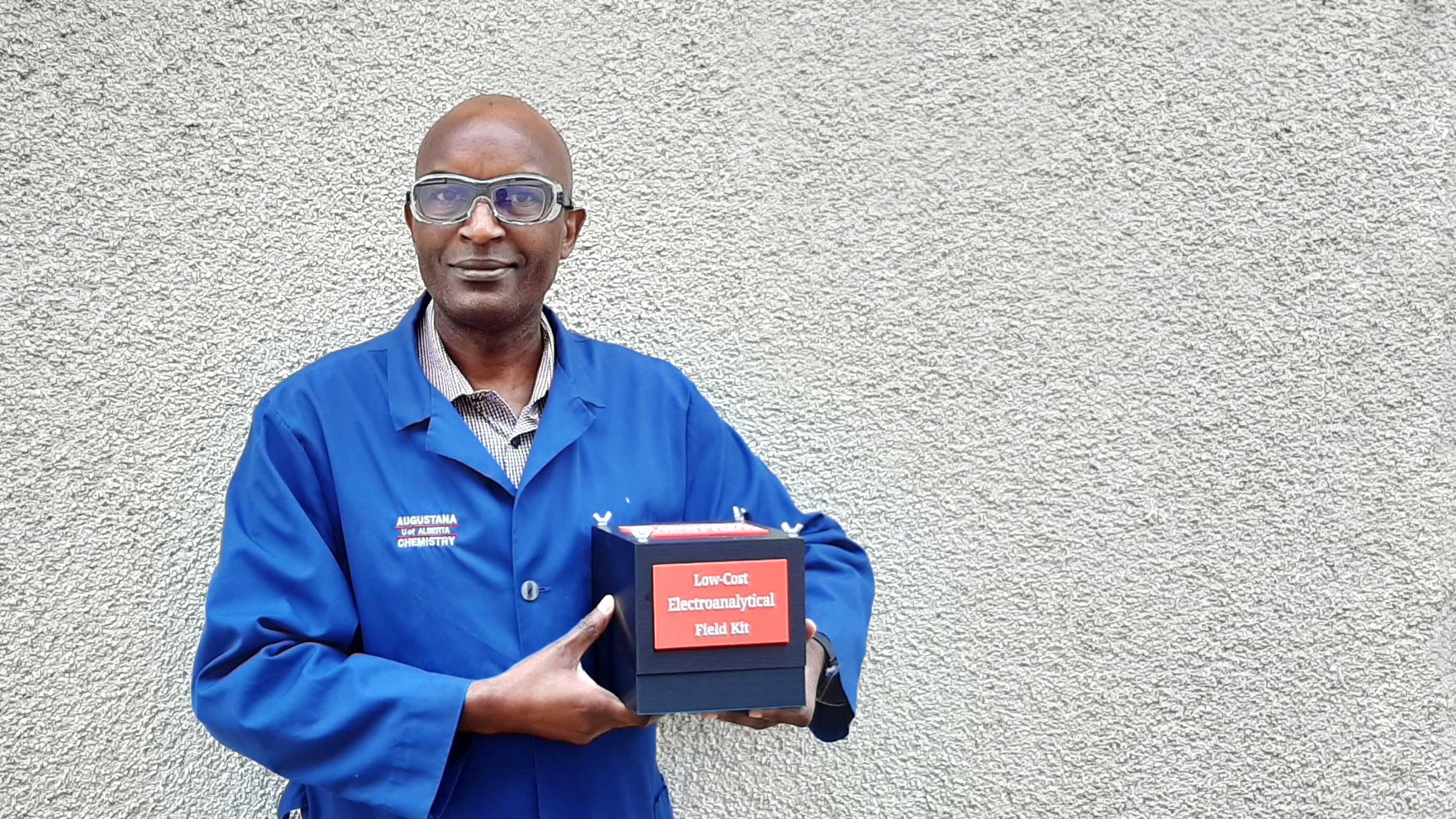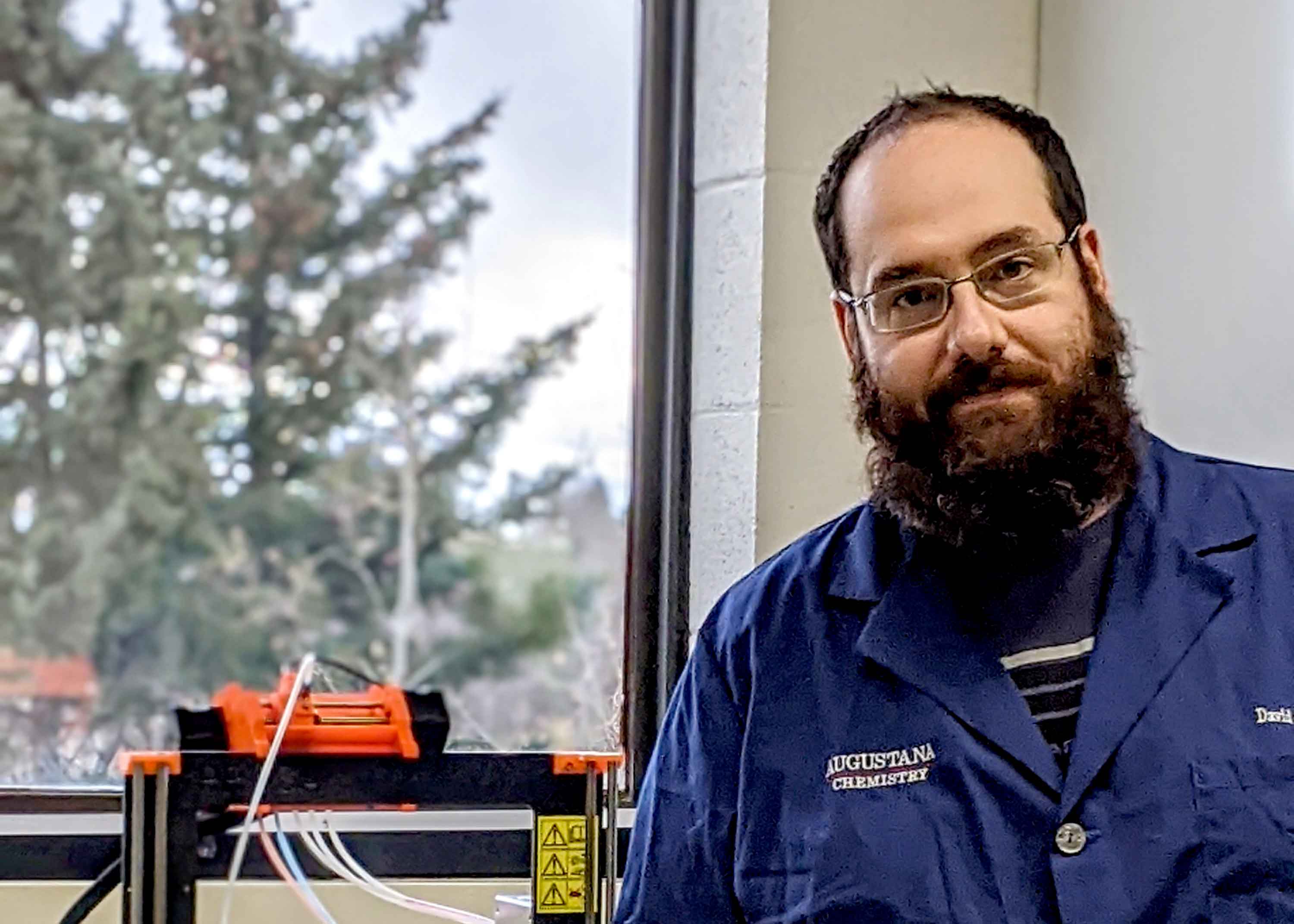Using 3-D printing technology, University of Alberta researchers hope to make chemistry experiments more affordable for high-school labs in rural Alberta and Kenya.
Low-cost electrodes—used to teach electrochemistry—are being created by professor James Kariuki and technician David King of the Augustana Campus Department of Chemistry.

Once the technology is perfected, they hope to donate inexpensive kits of the electrodes—components used to conduct electricity—along with related software and instrumentation to schools in the Camrose area where the campus is based, and to universities in Kenya, Kariuki’s home country.
The option would be more affordable than the materials currently available, and Kariuki hopes to spark students’ interest in what he sees as an important science, he said.
“Electrochemistry is applicable in many different fields—things like making batteries or analyzing water for heavy metal contamination—so by putting these kits into classroom labs, students are exposed at an early stage to practical experiments and it encourages them to continue in the field of electrochemistry or with science in general.
“It’s a start on what they will continue to learn in university.”
Building less expensive electrodes
Commercial electrodes, which can cost $300 to $800, contain expensive precious metals like gold and platinum, making them costly for widespread use in hands-on chemistry classes. But King and Kariuki have come up with prototypes for three types of electrodes made of less expensive materials.
“We’ve managed to take everyday things like gold or silver foil or wire, inexpensive recycled platinum and even pencil lead to use for electrodes, and we use affordable polymer to print the casings,” said King. A spool of polymer can yield “hundreds of electrodes” and cost only one to four dollars to produce.
They’re also working with retired Augustana computing science professor Jonathan Mohr, who is writing user-friendly software to go with the kit, and King is working to program the software into an inexpensive hand-held computer. The device, which would also be 3-D printed, would be used to apply the voltage that drives electrochemistry experiments.
Fostering future chemists
Students at Augustana Campus will also be working on the kit as it develops, added Kariuki, noting that one, supported by the The Right Honourable Don Mazankowski Research Internship, published a study in 2018 showing that the created 3-D electrodes work as well as commercial ones.
They hope to have a working prototype of the kit by the end of 2021 or early 2022, and are excited about using their expertise to help foster future chemistry students.
“It’s part of my giving back to the community,” said Kariuki, who recently became a full professor and talked about his passion for teaching. “It was my education and interest in science that has made me a professor. I used to love taking apart and exploring old batteries and I hope this induces some of that same interest in students.”
King said he finds it rewarding to leverage his knowledge of 3-D printing to solve problems.

“This project is way past anything I’ve been trained to do, and the fact I get to build something that benefits people ticks all the boxes for me.”
Great ideas change the world, but ideas need a push forward. At the University of Alberta, we know that push has never been more important as we do our part to rebuild Alberta and keep doors of opportunity open to all. We're making research discoveries. We’re cultivating entrepreneurs. And we’re giving our students the knowledge and skills they need to turn today's ideas into tomorrow's innovations. Read more stories about U of A innovators.